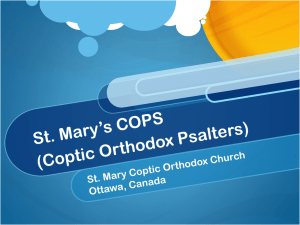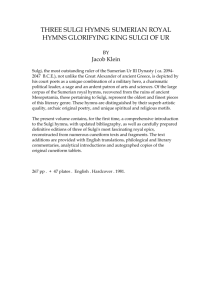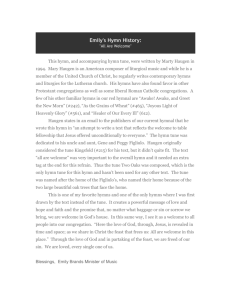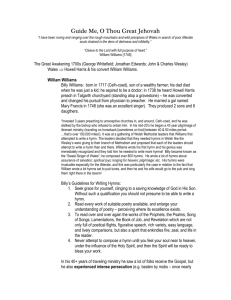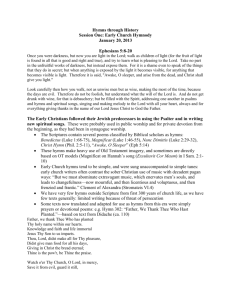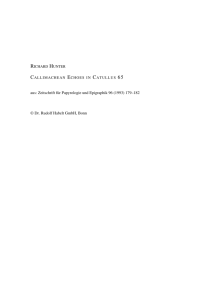The Creation of Ritual Space through Callimachus' Mimetic Hymns
advertisement
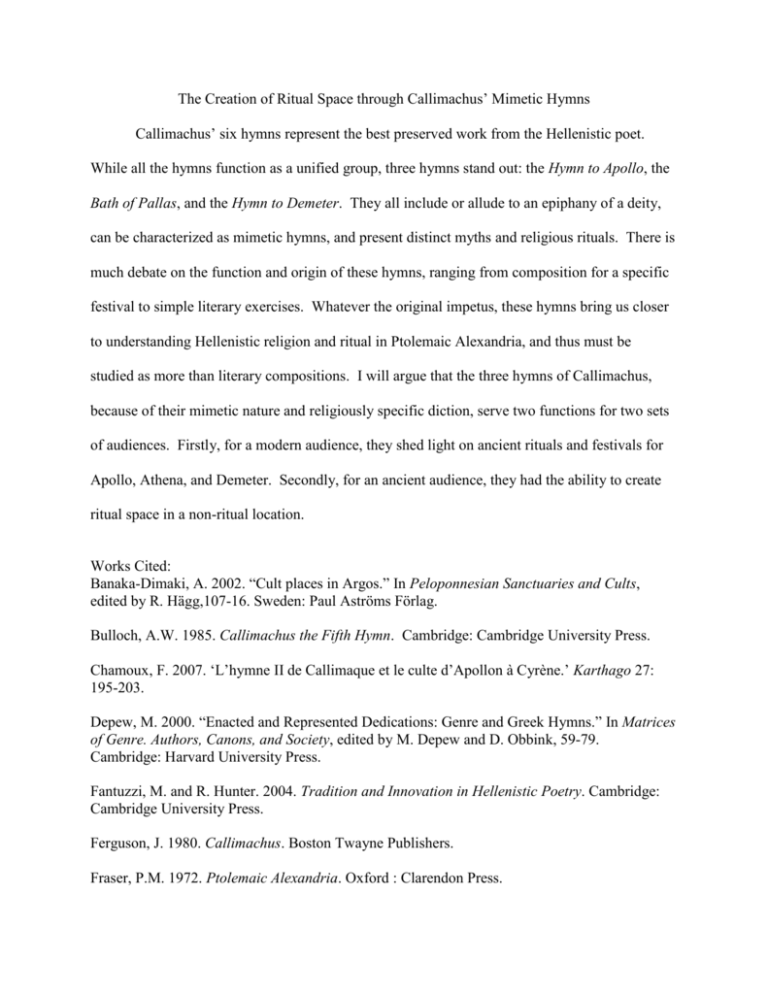
The Creation of Ritual Space through Callimachus’ Mimetic Hymns Callimachus’ six hymns represent the best preserved work from the Hellenistic poet. While all the hymns function as a unified group, three hymns stand out: the Hymn to Apollo, the Bath of Pallas, and the Hymn to Demeter. They all include or allude to an epiphany of a deity, can be characterized as mimetic hymns, and present distinct myths and religious rituals. There is much debate on the function and origin of these hymns, ranging from composition for a specific festival to simple literary exercises. Whatever the original impetus, these hymns bring us closer to understanding Hellenistic religion and ritual in Ptolemaic Alexandria, and thus must be studied as more than literary compositions. I will argue that the three hymns of Callimachus, because of their mimetic nature and religiously specific diction, serve two functions for two sets of audiences. Firstly, for a modern audience, they shed light on ancient rituals and festivals for Apollo, Athena, and Demeter. Secondly, for an ancient audience, they had the ability to create ritual space in a non-ritual location. Works Cited: Banaka-Dimaki, A. 2002. “Cult places in Argos.” In Peloponnesian Sanctuaries and Cults, edited by R. Hägg,107-16. Sweden: Paul Aströms Förlag. Bulloch, A.W. 1985. Callimachus the Fifth Hymn. Cambridge: Cambridge University Press. Chamoux, F. 2007. ‘L’hymne II de Callimaque et le culte d’Apollon à Cyrène.’ Karthago 27: 195-203. Depew, M. 2000. “Enacted and Represented Dedications: Genre and Greek Hymns.” In Matrices of Genre. Authors, Canons, and Society, edited by M. Depew and D. Obbink, 59-79. Cambridge: Harvard University Press. Fantuzzi, M. and R. Hunter. 2004. Tradition and Innovation in Hellenistic Poetry. Cambridge: Cambridge University Press. Ferguson, J. 1980. Callimachus. Boston Twayne Publishers. Fraser, P.M. 1972. Ptolemaic Alexandria. Oxford : Clarendon Press. Gutzwiller, K. 2007. A Guide to Hellenistic Literature. Massachusetts: Blackwell Publishing. Henrichs, A. 1993. “Gods in action: The poetics of divine performance in the Hymns of Callimachus.” In Hellenistic Groningana 1, edited by A. Harder, R.F. Regtuit, and G.C. Wakker, 127-47. Groningen: Egbert Forsten. Hopkinson, N. 1984. Callimachus Hymn to Demeter. Cambridge: Cambridge University Press. Hunter, R. 2008. “Imaginary Gods? Poetic theology in the Hymns of Callimachus.” In On Coming After: Part 1 Hellenistic poetry and its reception, edited by R. Hunter, 405-33. Berlin: de Gruyter. Manakidou, F.P. 2009. “Callimachus’ second and fifth hymn and Pindar: a reconstruction of “syggeneiai” between old and new Greece.” RFIC 137: 350-79. McKay, K.J. 1962. The Poet at Play: Kallimachos, The Bath of Pallas. Leiden: Brill. Morrison, A.D. 2005. “Sexual Ambiguity and the Identity of the Narrator in Callimachus’ Hymn to Athena.” BICS 48: 27-46. Morrison, A.D. 2007. “Callimachean narrators.” In The Narrator in Archaic Greek and Hellenistic Poetry, 103-220. Cambridge: Cambridge University Press. Petrovic, I. 2011. “Callimachus and Contemporary Religion: The Hymn to Apollo.” In Brill’s Companion to Callimachus, edited by B. Acosta-Hughes, L. Lehnus, and S. Stephens, 264-88. Leiden: Brill. Parker, R. 1983. Miasma: Pollution and Purification in early Greek Religion. Oxford: Clarendon Press. Rhodes, P.J. and R. Osborne. 2003. Greek Historical Inscriptions 404-323 BC. Oxford: Oxford University Press. Vollgraff, W. 1956. Le Sanctuaire D’Apollon Pythéen a Argos. Paris: Librairie Philosophique.
